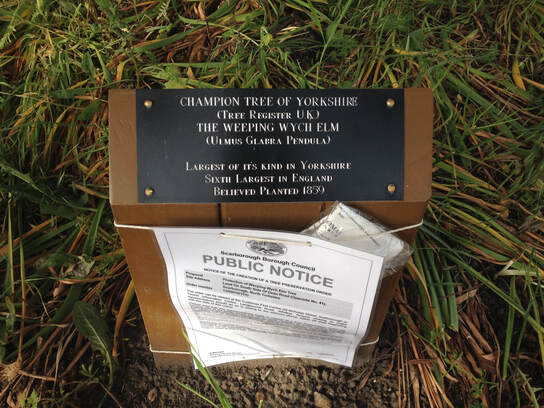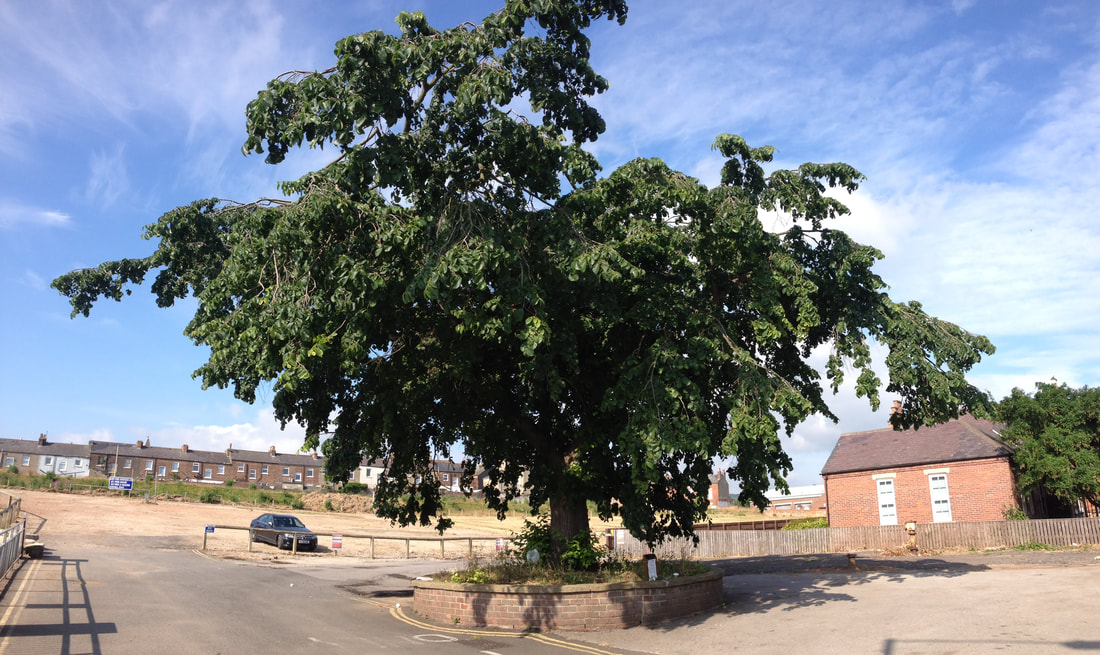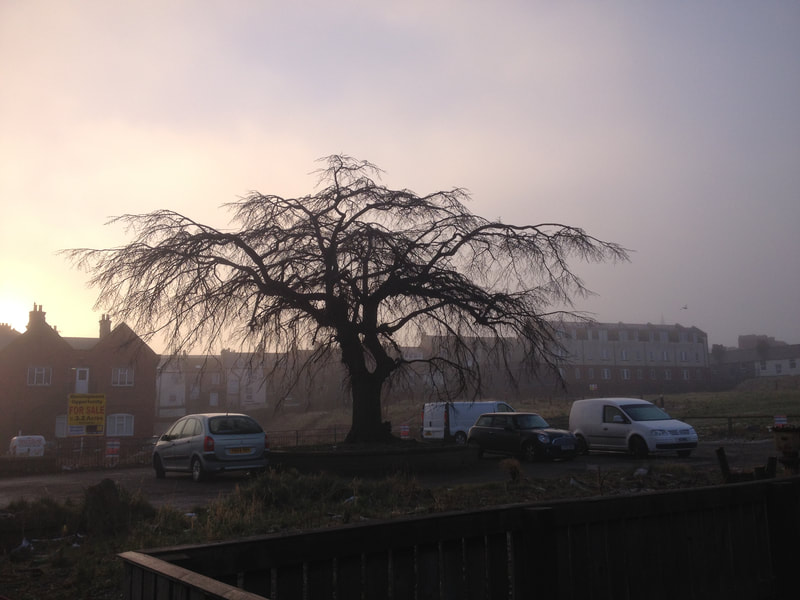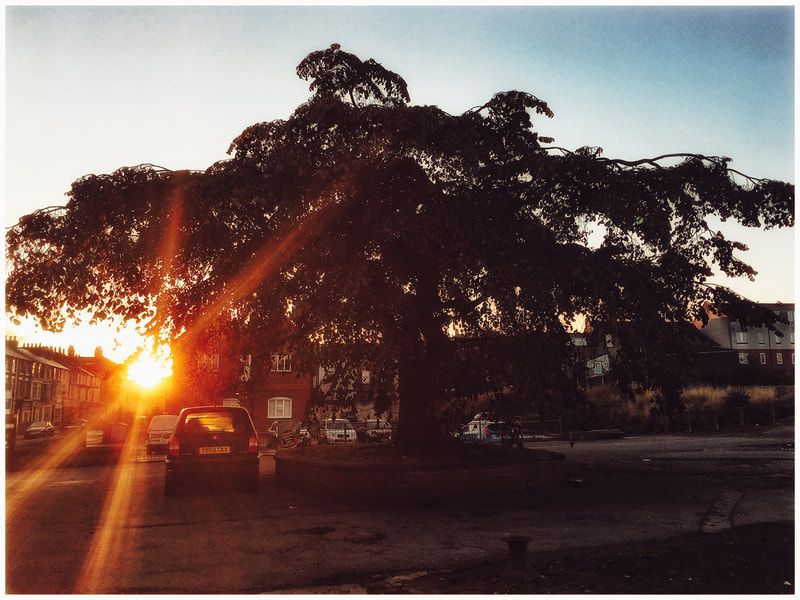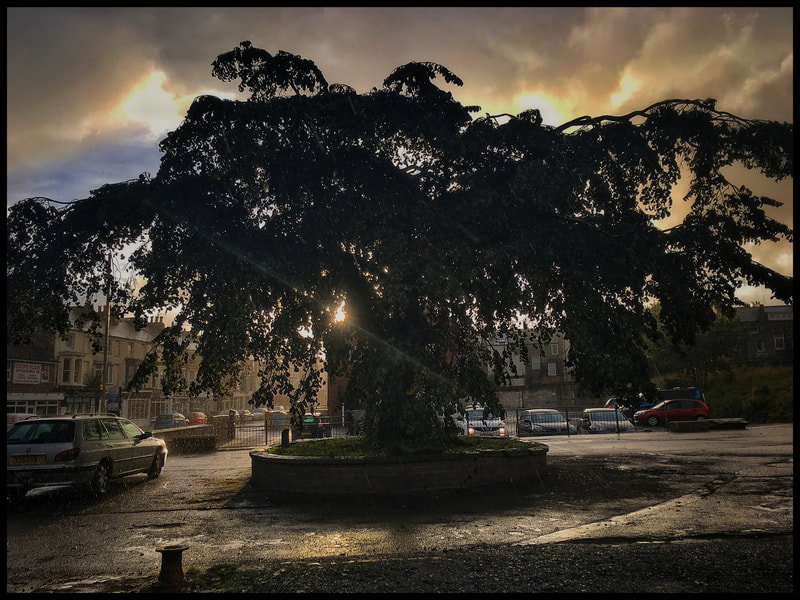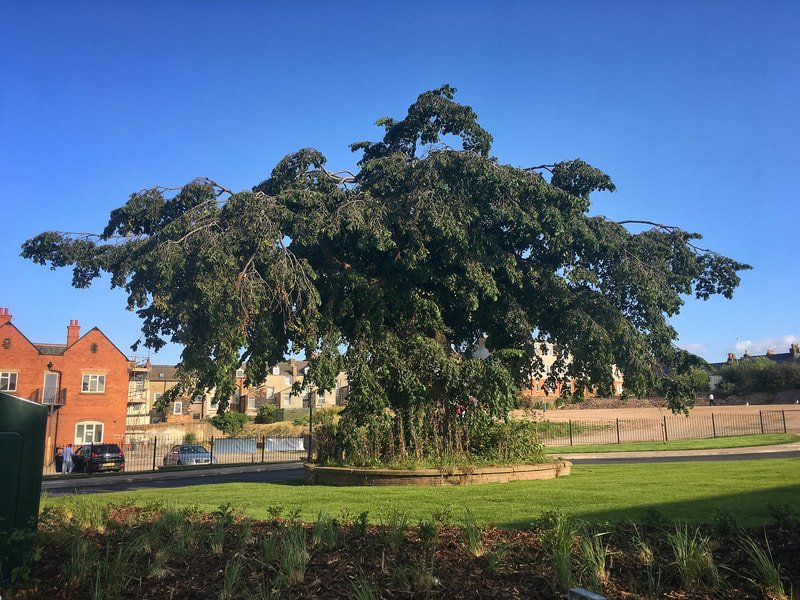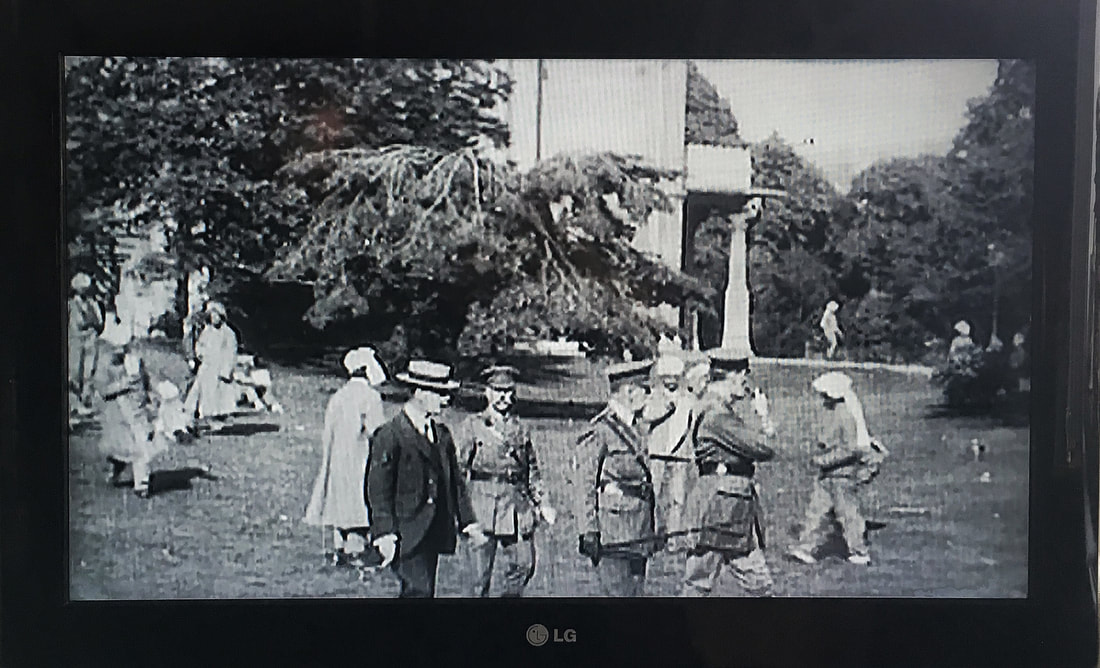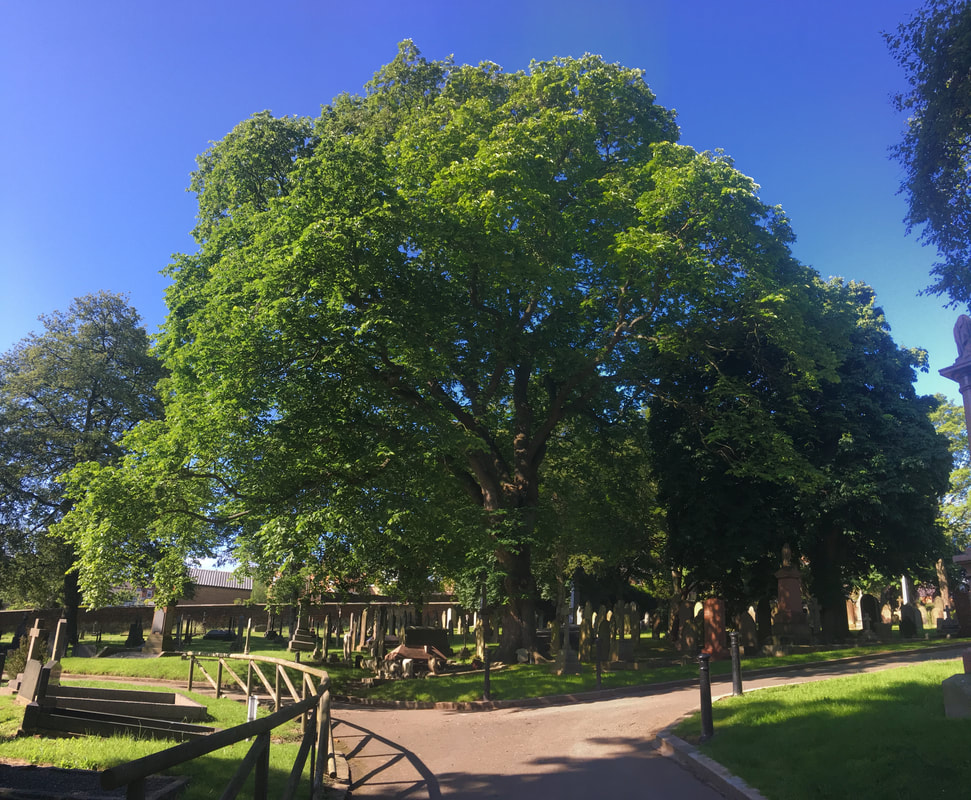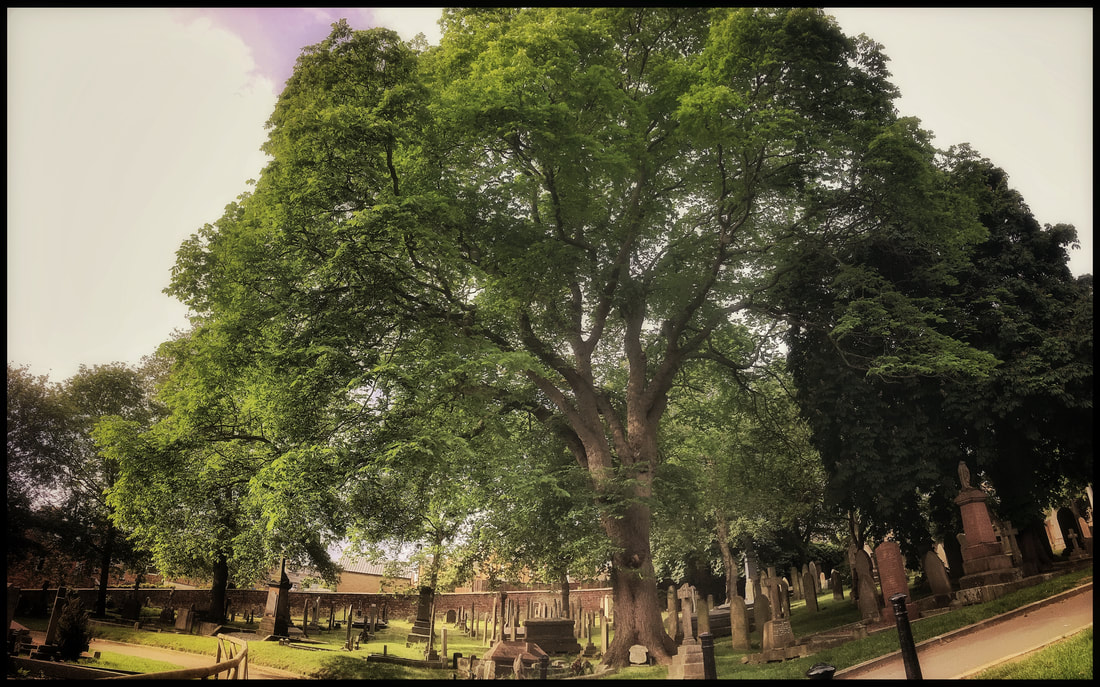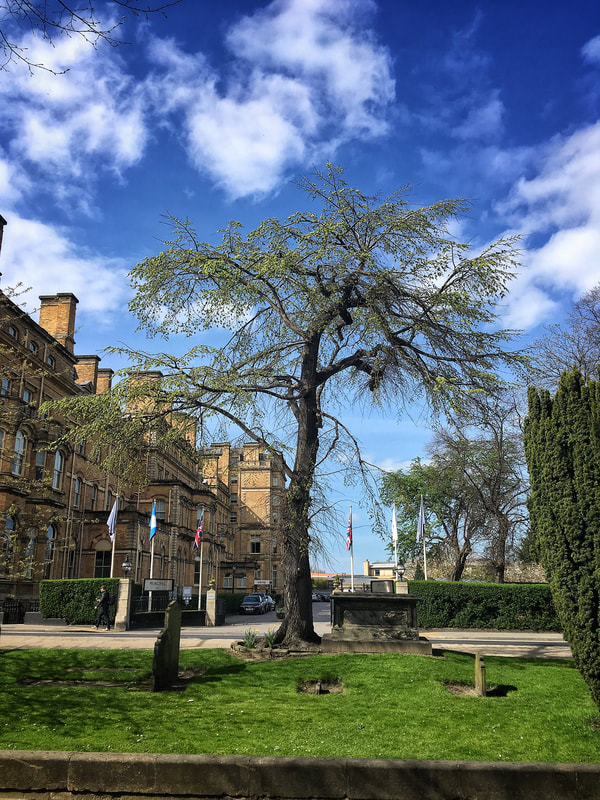The Weeping Wych Elm
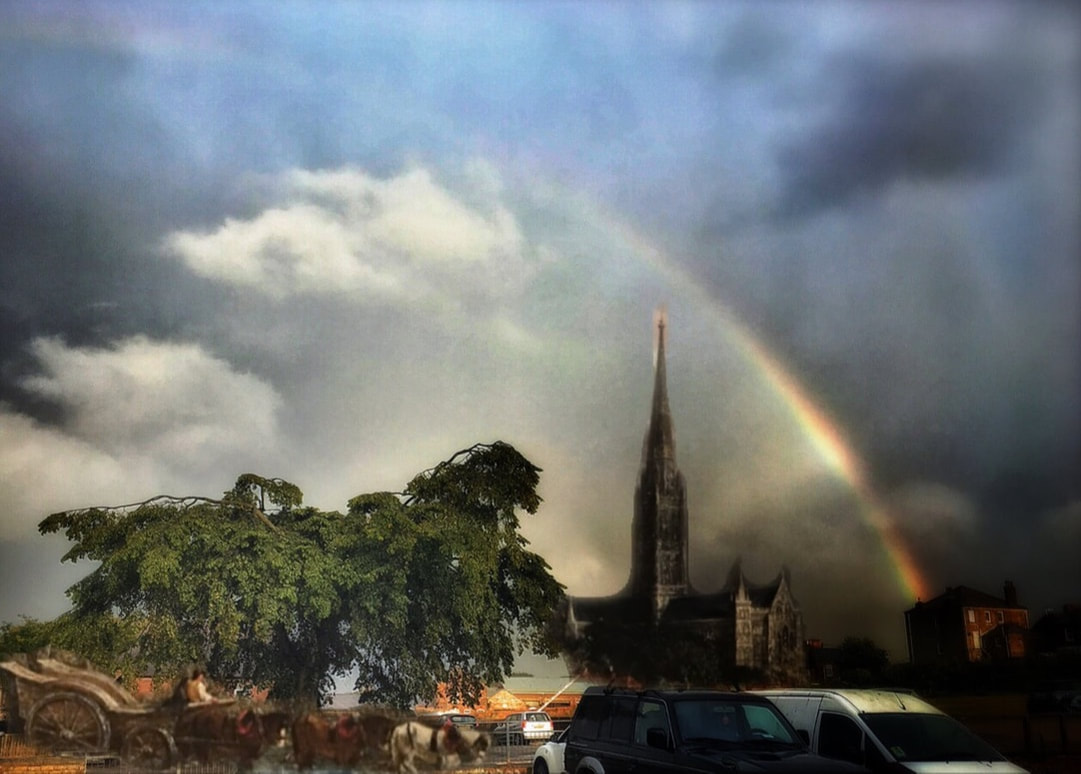 The Weeping Wych Elm. Photo Montage with Constable
The Weeping Wych Elm. Photo Montage with Constable
"Dod yn ol at fy nghoed", a Welsh phrase that means "to return to a balanced state of mind", the literal translation means, "to return to my trees”. In 2015 a tree preservation order was granted by Scarborough Borough Council for The Weeping Wych Elm, the Yorkshire Champion Tree on the brownfield site currently being developed at the top end of Dean Road. The tree is an excellent example of the species of Weeping Wych Elm and is the sixth largest in the country. It is the largest in Yorkshire, but not the tallest, beaten in height only by a few twigs and leaves of the Weeping Wych Elm in the old Cholera burial ground by the city walls outside of York Railway Station. Scarborough’s Weeping Elm is much grander, in my opinion.
Not many under the age of fifty will recognise a mature Elm tree because this species of tree is nearly gone; wiped out by Dutch Elm Disease. Many Elms lined various roads on Scarborough’s housing estates but alas these have had to be removed. There are aerial photos of the housing estates around Peasholm Park that clearly show these trees and at certain times of the year mushrooms, that are busy still breaking down the nutrients in the Elm’s roots, appear to remind us of the Elm’s former presence. The Elm is particularly prone to disease because the species is mostly part clone, a process which created its genetic vulnerabilities. There are still plenty of small Elms around but they sadly don't make maturity. The Weeping Wych Elm on Dean Road seems to have benefited from its urban concealment, managing to hide away amongst the buildings from the Elm Bark Beetle that spread Dutch Elm Disease.
Another great local Elm that’s worth a look can be found in Dean Road Cemetery. It’s on the east circle as you enter the grounds from the Columbus Ravine gate.
The word 'Wych' means 'pliable', to describe the quality of wood, not its association with witches who are said to shun the Elm. According to myth, a great Elm stands at the crossroads to the underworld. Its association with the underworld made the Elm a popular choice for coffin wood; “Elm hateth man and waiteth” is the old saying. The ‘Weeping' in the trees title describes the shape and nature of the tree; the tree wants to bend out and down over its base rather than upwards. Its nature is to spread wide across the floor, taking full advantage of the space around the trunk. Elms were once a popular boundary marker and many could be found on hedges and borders of land.
Elm trunks, whatever the variety, are very textured and like landscapes in themselves. A mesh of cross angled diamond valleys and ridges, with a translucent ‘thirty denier tan’ that is found in stockings. The English painter John Constable made a great but tiny study of an Elm trunk but instead of using browns and tans he used blues and turquoise to create a verdant shade. The painting resides in the V&A Museum in London.
Elm wood like Oak is a strong and dense wood that has a long maritime history and used by the Royal Navy in the age of sail. Admiral Collingwood, who fought alongside Lord Nelson at Trafalgar famously spent his spare time planting trees, “so England would never want for strong wood for her Navy.” He encouraged all gentleman to do the same.
Solid trunks of Elm were 'bored' using boring tools to produce long strong cylinders. The word 'boring', first used by Lord Byron to mean 'tedious' comes from describing this repetitive and difficult job working with Elm wood.
Trees, urban or rural, are important landmarks and often revered if that tree is particularly old, shapely or if it has a particular story or legend attached to it. Infamous trees include, The Tyburn Tree in London, an ancient place of execution; The Royal Oak in Shropshire, which King Charles II hid from the Roundheads; The Major Oak in Sherwood Forest, a shelter for Robin Hood; The Ankerwycke Yew at Runnymede where King John sealed the Magna Carta; The Flower of Kent Apple tree in Lincolnshire, where Isaac Newton discovered gravity; The Skyrack in Leeds, an ancient meeting place; The old Field Maple outside of Thirsk that was used for councils; and The Glastonbury Thorn, planted by Joseph of Arimathea, steeped in Grail legend and Monty Python lampoonery but cut down recently by vandals.
The largest Weeping Wych Elm in Britain was in the grounds of Brighton Pavilion. This tree can be found in many photos taken at the time of the First World War when it provided shade to Muslim, Hindu and Sikh soldiers, recuperating from the battle front. India provided many men to fight alongside Britain in the First World War and Brighton Pavilion, based on Indo-Islamic architecture, was transformed into their military hospital.
The writer Robert Graves, friend of the War Poet Wilfred Owen, studied traditional Welsh legend, notably the 14th Century poem Cad Goddeu or ‘The Battle Of The Trees’. In this poem the ancient Druid Gwydion animates the trees for war. Graves understood that the trees involved in the poem corresponded to letters in the ancient Ogham alphabet. He argued that the battle wasn’t physical but instead a struggle of wits and language and concealed secrets. He argued that the poem hid the remnants of an older religion, with a very different style of recording and documenting than ours. His ideas went on to inspire JR Tolkien’s, ‘The Last March of the Ents’ from The Lord of the Rings saga. Ogham, an ancient written language, very rare in Yorkshire, but Ogham is inscribed on the Hackness Cross. As the Elm is associated with the crossroads to the underworld, Ogham for Elm is the shape of a simple cross.
Former Scarborough Mayor and builder Abraham Moore used the names of trees to spell out his name (ABE-MOR) within the streets on the avenues; Ashville, Beechville, Elmville, Mayville, Oakville and Roseville adding the sporadic suffix ‘-Ville’.
DavWhiteArt.com

